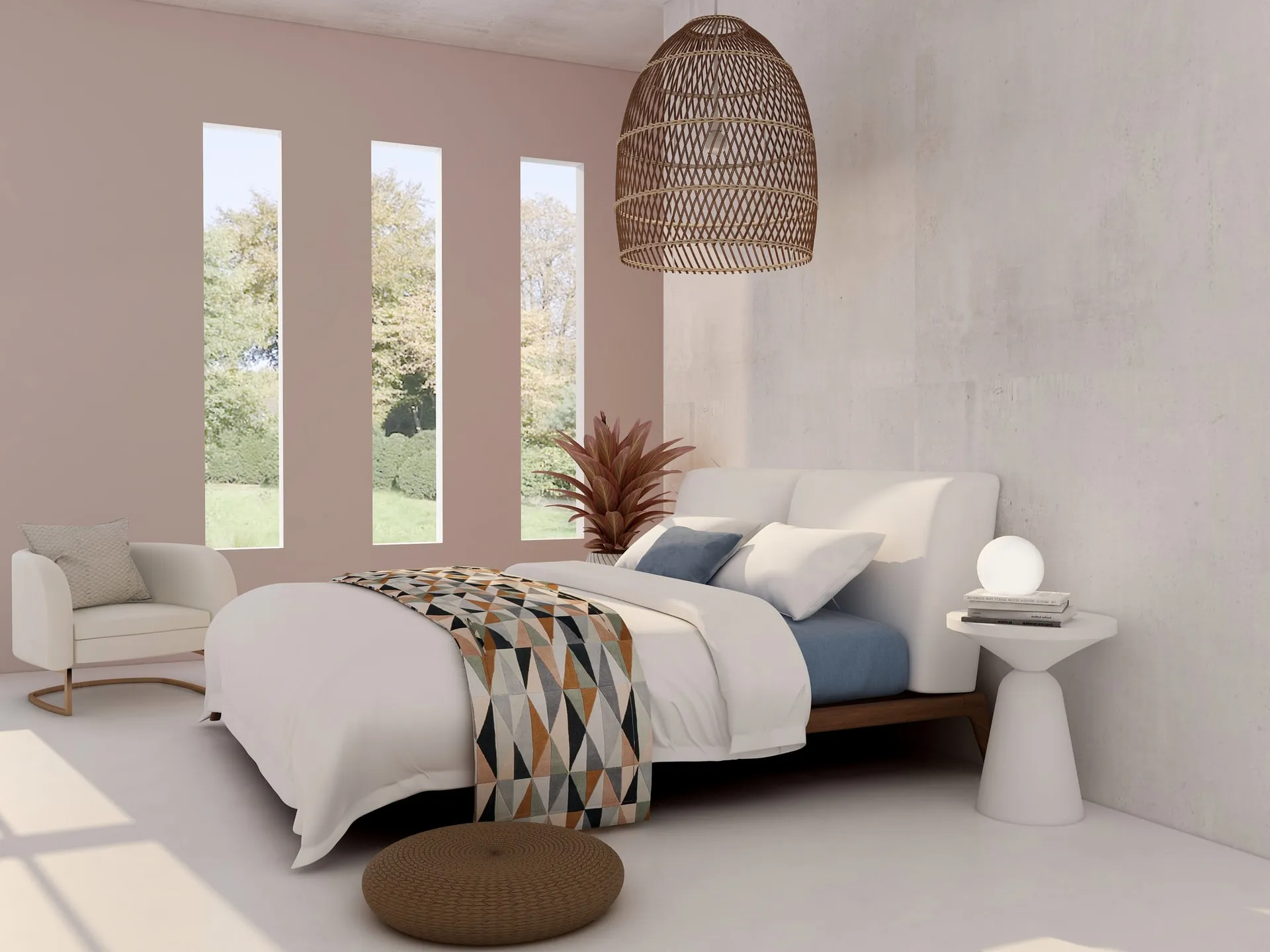
A bedroom or bedchamber is a room situated within a residential or accommodation unit characterised by its usage for sleeping. A typical western bedroom contains as bedroom furniture one or two beds (ranging from a crib for an infant, a single or twin bed for a toddler, child, teenager, or single adult to bigger sizes like a full, double, queen, king or California king [eastern or waterbed size for a couple]), a clothes closet, and bedside table and dressing table, both of which usually contain drawers. Except in bungalows, ranch style homes, or one-storey motels, bedrooms are usually on one of the floors of a dwelling that is above ground level. In larger Victorian houses it was common to have accessible from the bedroom a boudoir for the lady of the house and a dressing room for the gentleman. Attic bedrooms exist in some houses; since they are only separated from the outside air by the roof they are typically cold in winter and may be too hot in summer. The slope of the rafters supporting a pitched roof also makes them inconvenient. In houses where servants were living in they often used attic bedrooms.</p><p>In the 14th century the lower class slept on mattresses that were stuffed with hay and broom straws. During the 16th century mattresses stuffed with feathers started to gain popularity, with those who could afford them. The common person was doing well if he could buy a mattress after seven years of marriage. In the 18th century cotton and wool started to become more common. The first coil spring mattress was not invented until 1871. The most common and most purchased mattress is the innerspring mattress, though a wide variety of alternative materials are available including foam, latex, wool, and even silk. The variety of firmness choices range from relatively soft to a rather firm mattress. A bedroom may have bunk beds if two or more people share a room. A chamber pot kept under the bed or in a nightstand was usual in the period before modern domestic plumbing and bathrooms in dwellings.
Furniture and other items in bedrooms vary greatly, depending on taste, local traditions and the socioeconomic status of an individual. For instance, a primary bedroom may include a bed of a specific size (double, king or queen-sized); one or more dressers (or perhaps, a wardrobe armoire); a nightstand; one or more closets; and carpeting. Built-in closets are less common in Europe than in North America; thus there is greater use of freestanding wardrobes or armoires in Europe. An individual's bedroom is a reflection of their personality, as well as social class and socioeconomic status, and is unique to each person. However, there are certain items that are common in most bedrooms. Mattresses usually have a bed set to raise the mattress off the floor and the bed often provides some decoration. There are many different types of mattresses.
Most vets work in clinical settings, treating animals directly. They may be involved in a general practice, treating animals of all types; may be specialized in a specific group of animals such as companion animals, livestock, laboratory animals, zoo animals, or horses; or may specialize in a narrow medical discipline such as veterinary surgery, dermatology, cardiology, neurology, laboratory animal medicine, internal medicine, and more.</p><p>As with healthcare professionals, vets face ethical decisions about the care of their patients. Current debates within the profession include the ethics of purely cosmetic procedures on animals, such as declawing of cats, docking of tails, cropping of ears, and debarking on dogs.</p><p>Night stands are also popular. They are used to put various items on, such as an alarm clock or a small lamp. In the times before bathrooms existed in dwellings bedrooms often contained a washstand for tasks of personal hygiene. In the 2010s, having a television set in a bedroom is fairly common as well. 43% of American children from ages 3 to 4 have a television in their bedrooms. Along with television sets many bedrooms also have computers, video game consoles, and a desk to do work. In the late 20th century and early 21st century the bedroom became a more social environment and people[who?] started to spend a lot more time in their bedrooms than in the past. Materially, the Japanese tatami room, as opposed to its western counterpart (deemed The Western Room), has no door, bed, or even wall, making it barely detectable in space.
This room is typically situated towards the back of the home, close to the place dedicated to the family ancestors and opposite of the southern façade, the gardens, and the general exterior. The second half of the twentieth century saw a considerable change in the bedroom style. Almost non-existent before World War Two, The Western Room continued to gain traction in new constructions to the point where there is a clear relationship between age of a building and presence of western-style bedrooms. Cultural habits, however, have not shifted as rapidly. In the most densely populated cities, there exists a type of hotel essentially consisting of stacks of individual rooms so cramped they hardly allow one to do more than lie down and sleep. These are called capsule hotels, and have spread to areas like Singapore and Taiwan.
There are no comments